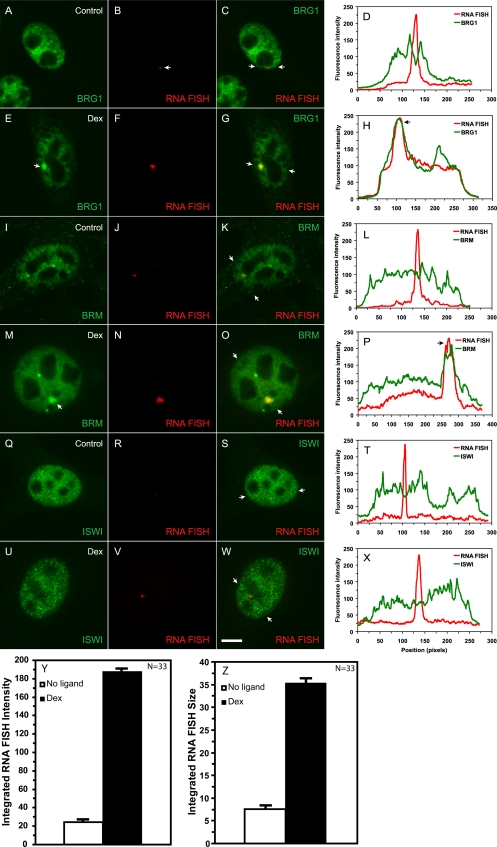Figure 2.
BRG1 and BRM but not ISWI chromatin remodeling activities are recruited to the MMTV array in a hormone-dependent manner. Mouse mammary adenocarcinoma cells (3134) with a single, stably integrated MMTV-LTR array were treated with 100 nM dexamethasone for 30 min. Fixed cells were probed with specific antibodies to detect endogenous BRG1, BRM, or ISWI by indirect immunofluorescence. MMTV RNA was detected by a RNA FISH using a probe specific to the MMTV transcript. The arrows in E and M point to the immunofluorescence detected localization of BRG1 and BRM on the MMTV array. The overlays (yellow) in C, G, K, O, S, and W indicate colocalization of the immunofluorescence and RNA FISH signals. The arrows in C, G, K, O, S, and W point to the end positions of linescans. Linescan analyses in D, H, L, P, T, and X quantitatively show the ligand-dependent recruitment or lack thereof of the BRG1, BRM, or ISWI chromatin-remodeling complexes to the MMTV-LTR array. The linescan in L runs through the RNA FISH signal that is adjacent but not coincident with the BRM fluorescence intensity peak. In H, P, and X, fluorescence intensity peaks for BRG1 and BRM but not for ISWI coincided with MMTV RNA. Bar, 4 um. Treatment of cells with 100nM dexamethasone for 30 minutes increases the intensity (Y) as well as the size (Z) of the MMTV RNA FISH signal.

